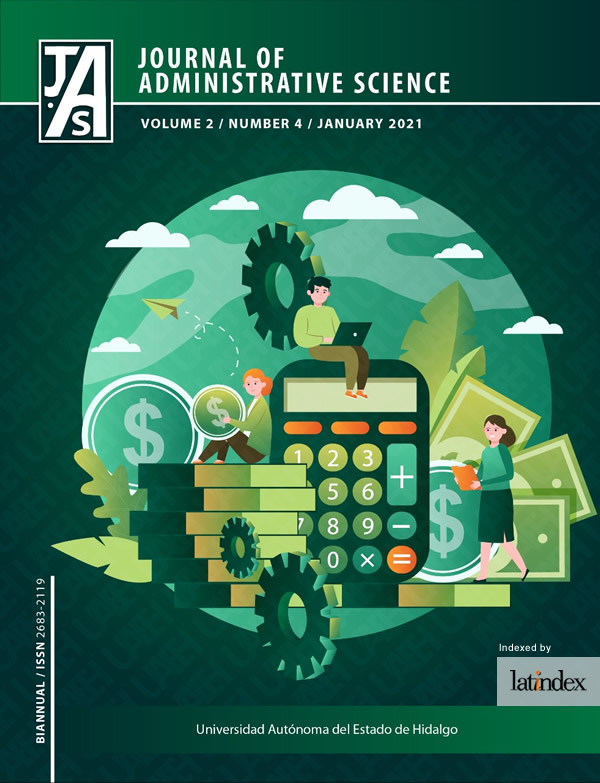Rural tourism as alternative for sustainable development case Huichapan, Hidalgo, Mexico
DOI:
https://doi.org/10.29057/jas.v2i4.6743Keywords:
Rural tourism, tourism potential, sustainabilityAbstract
Rural tourism is a dynamic and innovative way of doing tourism because it is very different from the traditional sun and beach tourism that is better known, the latter focuses on the tourist area of a place with a beach leaving aside the receiving community; However, the rural one focuses on the less privileged towns but with great tourist potential, to develop the tourist activity in which the tourist enters in contact with nature, the receiving community, and its culture, as long as the heritage is preserved and the environment is taken care of, since a characteristic of this one, is that sustainable development is carried out, in which besides knowing the customs and traditions of a place also the natural environment is preserved. It is worth mentioning that this activity is gaining strength day by day, since it is considered a way to eradicate poverty from a site, due to the great economic spill it generates.
Downloads
Publication Facts
Reviewer profiles N/A
Author statements
Indexed in
- Academic society
- N/A
- Publisher
- Universidad Autónoma del Estado de Hidalgo
References
OMT. (2019). UNWTO Tourism definitions. Obtenido de https://www.e-unwto.org/doi/pdf/10.18111/9789284420858
Fundéu. (s.f.). Fundación del Español Urgente . Obtenido de https://www.fundeu.es/recomendacion/turistificacion-neologismo-valido
Kieffer, M. (18 de Octubre de 2017). CONCEPTOS CLAVES PARA EL ESTUDIO DEL TURISMO RURAL COMUNITARIO. El Periplo Sustentable, 12-33. Obtenido de https://www.redalyc.org/jatsRepo/1934/193462125001/index.html
Group, S. (19 de Noviembre de 2013). Centro del Cambio Global y la Sustentabilidad, A.C. Obtenido de http://ccgss.org/sustentabilidad/
Madrid, F. (2015). La sostenibilidad en la política turística mexicana. PASOS. Revista de Turismo y Patrimonio Cultural Adventure México. (2019). Adventure México. Travel. Obtenido de https://adventuremexico.travel/estado/hidalgo/
Casas, C., Soler, A., & Pastor, J. (2012). El turismo comunitario como intrumento de erradicación de la pobreza. potencilidades para su desarrollo en Cuzco (Perú). Cuadenos de Turismo, 91-108Amador, C. F., Onofre, A. A., & Villarreal, L. Z. (3 de Julio de 2017). Universidad Autónoma del estado de Hidalgo. Obtenido de https://www.uaeh.edu.mx/scige/boletin/tepeji/n8/a19.html
Amador, C. F., Onofre, A. A., & Villarreal, L. Z. (3 de Julio de 2017). Universidad Autónoma del estado de Hidalgo. Obtenido de https://www.uaeh.edu.mx/scige/boletin/tepeji/n8/a19.html
Santamaría, E., & López-Pérez, S. (2019). Turismo Comunitario Sustentable en la Microrregión Costa Chica-Montaña, Guerrero, México. Redalyc, 2.
Morelos, L. J. (4 de Octubre de 2020). La Jornada Morelos. Obtenido de https://www.lajornadamorelos.com.mx/nacional/2020/10/04/28384/gobierno-morelos-en-beneficio-del-turismo-rurai
Gurría, Á. (3 de Mayo de 2019). OCDE. Obtenido de https://www.oecd.org/about/secretary-general/territorial-review-of-hidalgo-mexico-may-2019-sp.htm
Guerrero, H. A. (2016,2020). Plan Municipal de Desarrollo de Huichapan. Obtenido de plandedesarrollo.hidalgo.gob.mx Coneval, & INEGI. (2010). SEDESOL. Obtenido de http://www.dof.gob.mx/SEDESOL/Hidalgo_029.pdf
Coneval, & INEGI. (2010). SEDESOL. Obtenido de http://www.dof.gob.mx/SEDESOL/Hidalgo_029.pdf
SECTUR. (2020). Hidalgo Travel. Obtenido de https://hidalgo.travel/huichapan/

















